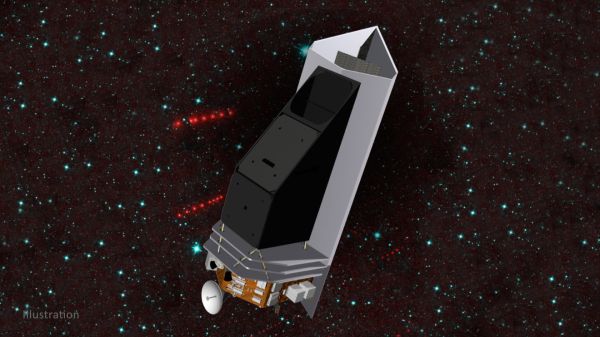
A NASA satellite designed to hunt for potentially dangerous asteroids and comets just took a big step toward the launch pad.
NASA has approved the Near-Earth Object (NEO) Surveyor space telescope to move into "preliminary design," its next phase of development on the road to a planned liftoff in 2026, agency officials announced on Friday (June 11).
"NEO Surveyor will have the capability to rapidly accelerate the rate at which NASA is able to discover asteroids and comets that could pose a hazard to the Earth, and it is being designed to discover 90% of asteroids 140 meters [460 feet] in size or larger within a decade of being launched," Mike Kelley, NEO Surveyor program scientist at NASA Headquarters in Washington, D.C., said in a statement.
Related: Potentially dangerous asteroids (images)
NASA has been working toward that 90% discovery target since 2005, in response to a congressional mandate. To date, the space agency estimates that scientists have found about 40% of NEOs at least 460 feet wide, which would cause widespread devastation if they hit Earth.
(Scientists believe an impactor would have to be at least 0.6 miles, or 1 kilometer, wide to threaten the existence of human civilization. More than 90% of these mountain-size NEOS have been found, NASA officials say, and none pose a risk for the foreseeable future.)
NEO Surveyor will launch to the Earth-sun Lagrange Point-1, a gravitationally stable spot in space about 930,000 miles (1.5 million km) from Earth. It will then use a 1.6-foot-wide (0.5 m) telescope and a suite of sensors to hunt for potentially hazardous NEOs in infrared light — a viewing strategy that should help researchers find huge numbers of objects zooming through Earth's neighborhood that are difficult for optical instruments to spot.
Sign up for the Live Science daily newsletter now
Get the world’s most fascinating discoveries delivered straight to your inbox.
"By searching for NEOs closer to the direction of the sun, NEO Surveyor would help astronomers discover impact hazards that could approach Earth from the daytime sky," NEO Surveyor principal investigator Amy Mainzer, who's based at the University of Arizona, said in the same statement.
"NEO Surveyor would also significantly enhance NASA’s ability to determine the specific sizes and characteristics of newly discovered NEOs by using infrared light, complementing ongoing observations being conducted by ground-based observatories and radar," Mainzer said.
NEO Surveyor has had a long and rocky development history. It's based on the Near-Earth Object Camera (NEOCam) mission, which was proposed to NASA multiple times as a planetary science mission over the past 15 years but never selected. (Mainzer was the principal investigator of the NEOCam concept as well. And she's principal investigator of NEOWISE, the current, asteroid-hunting phase of NASA's Wide-field Infrared Survey Explorer mission, which scans the heavens in infrared light. NEO Surveyor is envisioned as a more capable, more asteroid-targeted successor to NEOWISE.)
Finally, in late 2019, NASA announced that NEO Surveyor would fly — but not as a planetary science mission. NEO Surveyor will cost between $500 million and $600 million, with the funds coming from NASA's planetary defense program, Space News reported.
That program is footing the bill for another asteroid mission, called the Double Asteroid Redirection Test (DART). DART, which is scheduled to launch this November, will slam a probe into a moon of the asteroid Didymos in a test of the "kinetic impactor" strategy of asteroid deflection.
Telescopes here on Earth will gauge how much the impact moved the space rock. And a small European probe named Hera, which is slated to launch to the Didymos system in 2024, will study the effects up close.
Mike Wall is the author of "Out There" (Grand Central Publishing, 2018; illustrated by Karl Tate), a book about the search for alien life. Follow him on Twitter @michaeldwall. Follow us on Twitter @Spacedotcom or Facebook.











